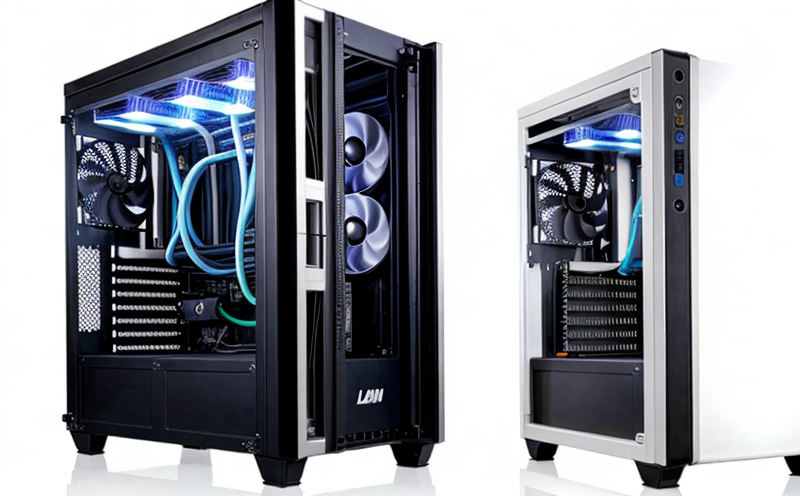EN 13779 Ventilation System Flow & Capacity Testing
The European Standard EN 13779:2016 provides detailed guidelines and methodologies for testing ventilation systems to ensure they meet the required flow and capacity specifications. This standard is crucial in ensuring that HVAC equipment operates efficiently, effectively, and safely within specified parameters. The test procedures outlined in this document are designed to evaluate the performance of ventilation systems under various conditions, which is essential for quality assurance.
The testing procedure involves several steps aimed at simulating real-world operational scenarios. First, the system's design flow rates must be determined based on the standard and project requirements. This involves understanding the building layout, occupant density, and other factors that influence ventilation needs. Once established, the actual flow rates are measured using calibrated instruments like anemometers and pressure gauges.
The testing process also includes checking for the uniformity of airflow distribution throughout the ductwork. This ensures that every part of the space receives adequate ventilation as intended by the design engineer. Non-uniform airflow can lead to hotspots or cold spots, which are undesirable in HVAC systems designed to provide comfortable and healthy environments.
Additionally, the system’s static pressure is measured at various points along the ductwork to ensure that it does not exceed safe limits. Excessive static pressure can indicate issues such as blockages or inefficient fan performance, both of which affect overall system efficiency.
In more complex systems, dynamic testing may be required where the system's behavior changes over time due to varying conditions like occupancy levels, outdoor air temperatures, etc. Dynamic tests help assess how well the system responds to these variations and maintains its operational integrity.
Once all measurements have been taken, they are compared against the design specifications provided in EN 13779. Any discrepancies between measured values and expected outcomes are documented along with recommendations for corrective actions if necessary.
- Quality Assurance: Regular testing ensures continuous compliance with current standards.
- Data Accuracy: Precise measurement tools guarantee accurate results.
- System Optimization: Identifies areas of improvement leading to better performance and energy efficiency.
- Occupant Comfort: Ensures that the ventilation system meets all necessary criteria for comfort, health, and safety.
This testing not only helps in meeting regulatory requirements but also enhances the reliability and longevity of HVAC systems. By adhering to EN 13779, facilities can ensure their ventilation systems operate at peak efficiency, thereby reducing operational costs and environmental impacts while providing a healthier indoor environment for occupants.
Applied Standards
The primary standard used in this testing is EN 13779:2016, which specifies the method of determining flow rates and capacities of ventilation systems. This European Standard ensures that all tests are conducted uniformly across different regions, providing a consistent basis for evaluating HVAC equipment performance.
The standard covers various aspects including static pressure measurements, dynamic testing under changing conditions, and uniformity checks within the ductwork. It emphasizes precision in measurement techniques to minimize errors and provide reliable data.
Other relevant standards that complement EN 13779 include ISO 9237, which deals with airflow through ducts, and ASTM E2364, focusing on methods for measuring air velocity. Together, these standards form a comprehensive framework for conducting thorough ventilation system flow & capacity tests.
EuroLab Advantages
EuroLab offers unparalleled expertise in performing EN 13779 compliance testing for ventilation systems. Our team comprises highly qualified professionals who possess deep knowledge of both the theoretical aspects and practical applications of this standard. With years of experience, they bring a wealth of insights into ensuring that each test adheres strictly to the requirements set forth by EN 13779.
We employ state-of-the-art equipment calibrated according to international standards, guaranteeing accurate results every time. Our facilities are equipped with high-quality instruments such as anemometers, pressure sensors, and data loggers capable of capturing minute details about airflow patterns and pressures.
Our approach goes beyond mere compliance; it focuses on optimizing system performance by identifying potential weaknesses early on. This proactive stance enables us to provide valuable recommendations aimed at enhancing the overall efficiency and reliability of your ventilation systems.
In addition, EuroLab ensures that all tests are conducted in a controlled environment simulating real-world conditions as closely as possible. This helps in providing more realistic assessments of how well your HVAC equipment will perform under actual usage scenarios.
Quality and Reliability Assurance
The quality and reliability assurance processes associated with EN 13779 testing encompass several key areas:
- Data Accuracy: Utilizing precise measurement tools ensures that the data collected is accurate, providing a reliable basis for decision-making.
- Reproducibility: By adhering strictly to the procedures outlined in EN 13779, we ensure that tests can be repeated with consistent results across different times and locations.
- Compliance Verification: Regular testing verifies ongoing compliance with current standards, ensuring continuous adherence to best practices.
- System Optimization: Identifying discrepancies early allows for timely interventions, optimizing system performance before issues escalate into more significant problems.
- Data Transparency: Comprehensive reporting provides clear insights into the condition of your ventilation systems, facilitating informed decisions regarding maintenance and upgrades.
These measures collectively contribute to maintaining high levels of quality and reliability in your HVAC equipment. By partnering with EuroLab for EN 13779 compliance testing, you can rest assured that your facilities are receiving the best possible care in terms of ventilation system performance.





